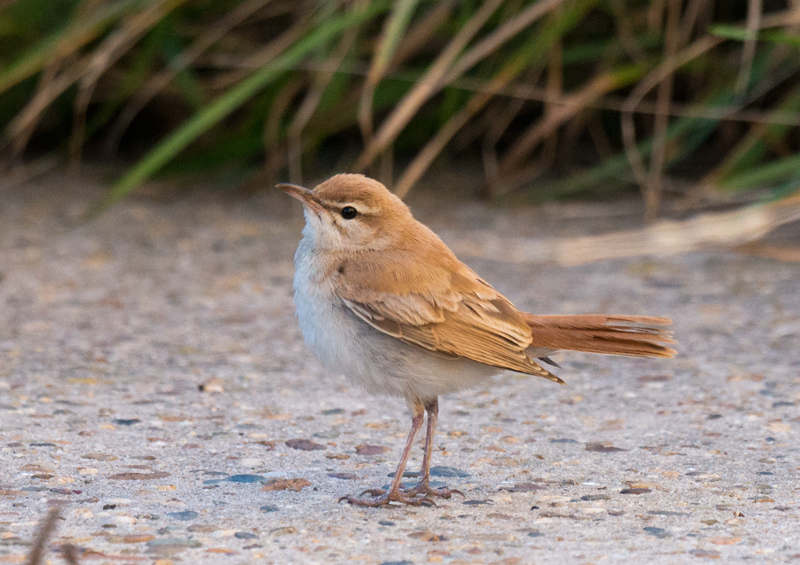On 25 September 2013 at 16:30 hours Henry van Lierop found a rather conspicuous bird feeding at the site of a small channel in the Vereenigde Harger- en Pettemerpolder between Petten and Camperduin, Noord-Holland, behind the famous seadike the Hondsbosse Zeewering. He could not believe his eyes, therefore he took some pictures and put these on the internetsite Waarneming.nl asking for advice. At waarneming.nl several visitors immediately identified the bird as a Rufous-tailed Scrub Robin Cercotrichas galactotes, a first for the Netherlands! News was spread around 20:00 hours, just too late to make it before dark for eager birders.
Next day c 150 (including myself) gathered at first light and at around 7:15 hours the bird made it's first appearance and showed itself very well. The birds stayed till 27 September and during it's three-day stay, the bird attracted c 500 birders! The rufous plumage fitted the western/northern subspecies galactotes best.


It was accepted as the first record for the Netherlands. Rufous-tailed Scrub Robin is very rare in northwestern Europe, with 8 records in the UK (September 1854, September 1859, October 1876, September 1951, October 1959, September 1963, October 1972 and August 1980), 3 in Ireland (September 1876, September 1951 and April 1968), one in Finland (May 1995), one on Jersey, Channel Islands (June 1996) and several in Germany with at least four records on Helgoland in the 19th century (no exact details found), October 1995, September 1997, June 1998 and with the most recent record on the Isle of Mellum on 2 October 2011.
Go to the main-index, the 2013-index or the next species the Pallid Swift?